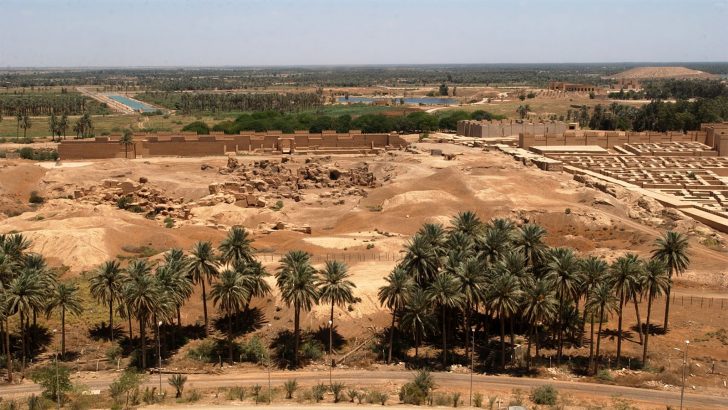Babylon is one of those names that echoes through the ages, a city of legend and biblical tales. But where is Babylon today? Is it just a forgotten city buried under the sands of time, or can we still trace its grandeur in the modern world? Let's uncover the mysteries of Babylon, its historical significance, and what remains of it today.

World Today / Babylon, one of the most famous cities from ancient times, originally thrived in what is now modern-day Iraq, about 85 kilometers south of Baghdad.
This city was the heart of several key empires throughout the ages, most notably the Babylonian Empire under the rule of King Nebuchadnezzar II. Imagine a city so advanced that its Hanging Gardens were considered one of the Seven Wonders of the Ancient World, although historians still debate their existence.
However, Babylon's reputation for grandeur and decadence is not just a myth. It was a real metropolis, bustling with culture, commerce, and science. The city's architecture, like the famed Ishtar Gate, and its innovative urban planning, including the division into distinct sectors for housing, temples, and palaces, speak volumes about its sophistication. But as centuries passed, the city's prominence waned, leading many to ponder - where is Babylon today in terms of its physical and cultural legacy?
The Decline and Rediscovery of Babylon
As empires rose and fell, so too did Babylon. By the first century AD, the city was largely abandoned, succumbing to the ravages of war and the shifting courses of the Euphrates River, which once fed its majesty. The sands of time slowly buried its ruins, and Babylon faded into the realm of legend.

The News / Located in the south of Baghdad, Babylon was a ‘real’ metropolis, bustling with culture, commerce, and science.
Fast forward to the 19th century, archaeologists began to excavate the site, unearthing parts of its former glory. They discovered remnants of the Ishtar Gate, portions of the famed walls, and various artifacts that shed light on the daily lives of Babylonians. These findings have helped historians piece together the puzzle of Babylon's complex history and contribute significantly to our understanding of ancient civilizations.
Where is Babylon Today in the Modern World?
So, where is Babylon today in the context of the modern world? Although the physical city no longer thrives as it once did, the site itself has not been lost to history. The area that was once Babylon is now an archaeological site near the town of Al Hillah in Iraq. Efforts have been made to preserve what remains of the ancient city. In 2019, UNESCO designated Babylon as a World Heritage Site, recognizing its profound historical and cultural significance.

Shutter Stock / The area that was once Babylon is now an archaeological site near the town of Al Hillah in Iraq.
Visitors to the site can explore the ruins of the old city walls, the foundations of the Tower of Babel, and the rebuilt facade of the Ishtar Gate. Although much of the city's former beauty has been lost to time, the site offers a haunting glimpse into its past grandeur and the enduring legacy of its civilization.
The Cultural Legacy of Babylon
Babylon's influence extends far beyond its archaeological remnants. The city has left a lasting imprint on culture, language, and literature. The Code of Hammurabi, one of the oldest deciphered writings of significant length in the world, came from Babylon and has influenced legal systems throughout history. Babylonian mathematics and astronomy have also left their mark on how we understand the world today.
Plus, the story of Babylon has permeated popular culture in many ways, from references in religious texts to its portrayal in films and literature. The term "Babylon" itself has become synonymous with any large, opulent, and corrupt city. It serves as a metaphor for civilization's achievements and its excesses and pitfalls.



